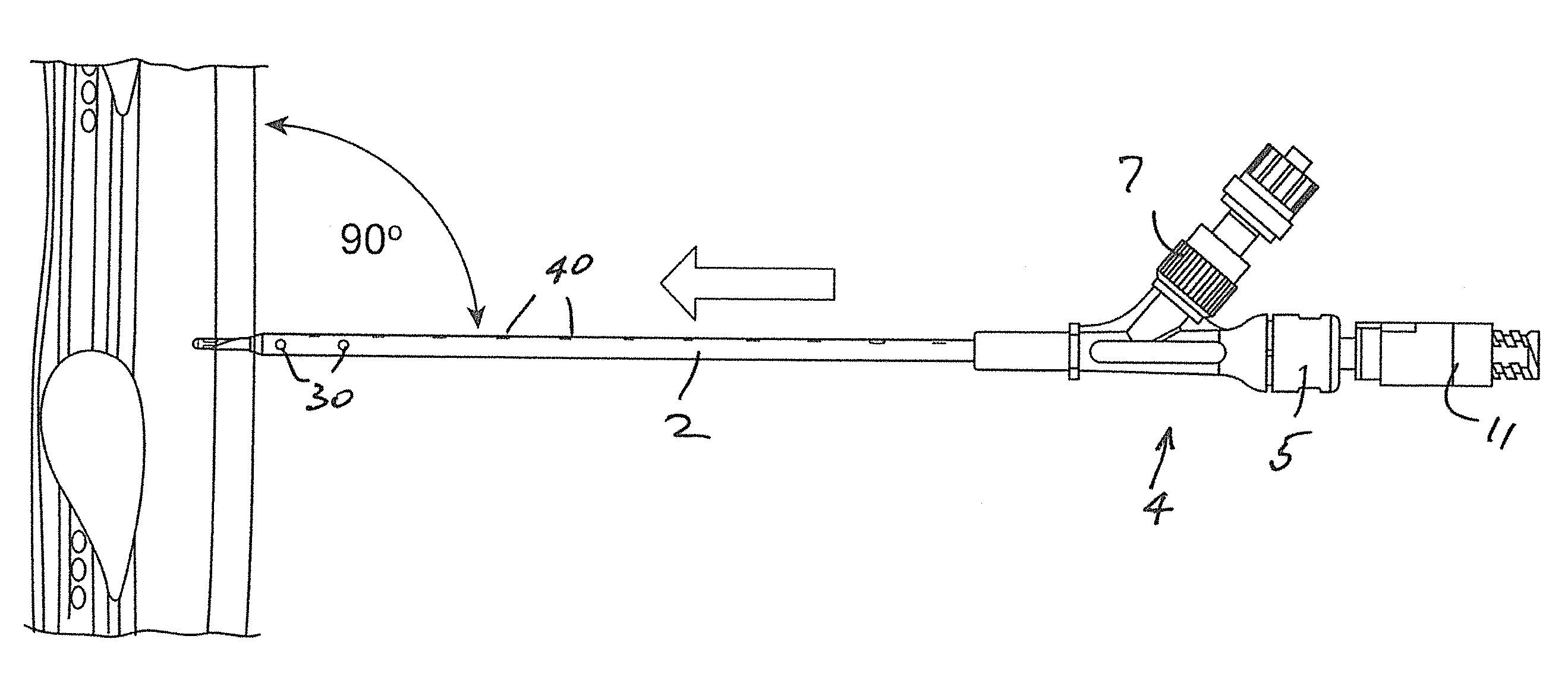Transcutaneous device for removal of fluid from a body
a technology of transcutaneous device and body, which is applied in the field of transcutaneous device for removal of fluid from the body, can solve the problems of nt failure, prone to blockage of cannula used in current nt's, and insufficient complications or indeed inadequate, so as to improve the function of the device, improve the utility, and reduce the effect of nt failur
- Summary
- Abstract
- Description
- Claims
- Application Information
AI Technical Summary
Benefits of technology
Problems solved by technology
Method used
Image
Examples
example 1
[0164]The device of the invention successfully penetrated skin / muscle penetration using an uncooked pork belly sample. Uncooked pork belly provides a good human skin / muscle substitute due to its outer tough skin and multiple tissue layers.
example 2
Freshly Thawed Cadaver Pleural Cavity Penetration
[0165]A cadaver study was performed with the invention. The device was tested for insertion into a freshly thawed non-embalmed cadaver. The study mimicked the placement of the device for the management of a tension pneumothorax. The device insertion site was located and insertion with the device was as described above. The device successfully penetrated the skin surface.
example 3
Embalmed Cadaver Fluid Expiration Test
[0166]Example 2 was repeated using an embalmed cadaver. After insertion, embalming fluid escaped through the Veress needle on entry and after Veress needle withdrawal the fluid escaped through the side port one way crack valve but not through the self-sealing bung. This was representative of the in vivo fluid / gas functionality of the device.
PUM
 Login to View More
Login to View More Abstract
Description
Claims
Application Information
 Login to View More
Login to View More - R&D
- Intellectual Property
- Life Sciences
- Materials
- Tech Scout
- Unparalleled Data Quality
- Higher Quality Content
- 60% Fewer Hallucinations
Browse by: Latest US Patents, China's latest patents, Technical Efficacy Thesaurus, Application Domain, Technology Topic, Popular Technical Reports.
© 2025 PatSnap. All rights reserved.Legal|Privacy policy|Modern Slavery Act Transparency Statement|Sitemap|About US| Contact US: help@patsnap.com



